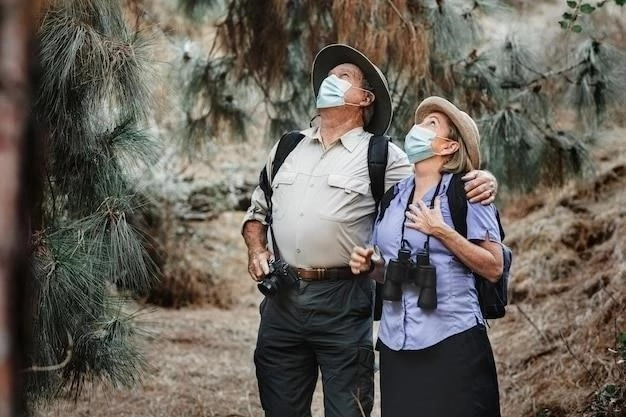Belarus Travel Guide 2024
Explore the captivating beauty and rich cultural heritage of Belarus. Discover ancient forests, shimmering lakes, and charming cities. Uncover the warmth of Belarusian hospitality as you delve into a land of captivating history and traditions.
Is it safe to travel to Belarus right now?
The current safety situation for traveling to Belarus necessitates careful consideration. The U.S. Department of State advises against travel to Belarus due to several factors.
The Belarusian government’s support of Russia’s war against Ukraine raises concerns. The presence of Russian military forces in Belarus and the potential for civil unrest contribute to the uncertainty. Additionally, there are risks associated with arbitrary enforcement of local laws and the possibility of detention.

Travelers should be aware that the U.S. Embassy in Belarus has limited capacity to assist U.S. citizens in case of emergencies. It is crucial to stay informed about the latest travel advisories and exercise heightened caution if considering travel to Belarus at this time.

Why is Belarus popular with tourists?
Belarus, often referred to as “the lungs of Europe,” captivates travelers with its unspoiled natural beauty. Vast forests, serene lakes, and sprawling national parks offer a tranquil escape. The country’s commitment to preserving its natural heritage is evident in its numerous protected areas, making it a haven for nature enthusiasts and eco-tourists.

Beyond its natural splendor, Belarus boasts a rich tapestry of history and culture. Majestic castles, such as Mir Castle and Nesvizh Castle, transport visitors back in time, showcasing the country’s regal past. The architectural marvels of Minsk, Brest, and Grodno, with their blend of medieval and Soviet-era influences, offer a glimpse into Belarus’s diverse heritage.
Belarusian hospitality is renowned, with locals often going above and beyond to welcome visitors. The country’s affordability, coupled with its accessibility, further enhances its appeal as a travel destination.
What is special in Belarus?
Belarus possesses a distinctive charm that sets it apart as a travel destination. Its unspoiled natural landscapes, often referred to as “Europe’s last true wilderness,” offer a sense of serenity and tranquility. Vast forests, pristine lakes, and meandering rivers create a picturesque backdrop for outdoor adventures and nature retreats.
The country’s rich history and cultural heritage are deeply rooted in its architectural treasures. Stately castles, such as the UNESCO-listed Mir Castle and Nesvizh Castle, showcase the grandeur of Belarus’s aristocratic past. Orthodox churches and cathedrals, with their ornate interiors and onion-domed spires, reflect the country’s spiritual heritage.
Beyond its natural and architectural wonders, Belarus offers a glimpse into a unique cultural landscape. Traditional crafts, such as weaving and pottery, are still practiced today, providing visitors with an opportunity to witness age-old traditions. The warmth and hospitality of the Belarusian people further enhance the travel experience.

Top Attractions in Belarus
Belarus captivates visitors with its diverse range of attractions, from architectural marvels to pristine natural landscapes. Here are some of the must-see destinations:
- Mir Castle: A UNESCO World Heritage site, Mir Castle is a stunning example of Belarusian Gothic architecture, with its towering red-brick walls, ornate towers, and picturesque courtyards.
- Nesvizh Castle: Another UNESCO-listed gem, Nesvizh Castle impresses with its opulent interiors, extensive gardens, and rich history as the residence of the powerful Radziwiłł family.
- Brest Fortress: A poignant symbol of Soviet resistance during World War II, Brest Fortress commemorates the heroic defense against the invading German forces.
- Bialowieza Forest: A UNESCO World Heritage site and one of Europe’s last remaining primeval forests, Białowieża Forest is a haven for biodiversity, home to a remarkable array of flora and fauna, including the European bison.
- National Library of Belarus: An architectural marvel in Minsk, the National Library of Belarus houses a vast collection of books and manuscripts, offering a glimpse into the country’s literary heritage.
Minsk
Minsk, the capital of Belarus, is a vibrant city that seamlessly blends its Soviet-era past with a modern, cosmopolitan outlook. Wide avenues, lined with imposing Soviet-era architecture, give way to charming cobblestone streets and green spaces, creating a unique urban landscape.
Begin your exploration at Independence Square, one of Europe’s largest public squares, home to grand government buildings and impressive fountains. Stroll along the banks of the Svislach River, where you can admire the city’s skyline and visit Trinity Suburb, a meticulously restored historic district with cobbled streets, quaint cafes, and art galleries.
Immerse yourself in Belarusian culture at the National Art Museum, home to an extensive collection of Belarusian and international art, or the Belarusian State Circus, renowned for its spectacular performances.

The Bialowieza Forest
Straddling the border between Belarus and Poland, the Bialowieza Forest stands as a testament to Europe’s primeval past. Designated a UNESCO World Heritage Site, this expansive forest is one of the last and largest remaining tracts of primeval lowland forest on the continent, largely untouched by human intervention.
Venturing into Bialowieza is akin to stepping back in time. Towering oaks, some centuries old, create a majestic canopy overhead, while a rich tapestry of flora and fauna thrives beneath. The forest is renowned for its biodiversity, home to over 800 plant species, 250 bird species, and 59 mammal species.
Observe the majestic European bison, the forest’s iconic inhabitant, in its natural habitat. Embark on guided tours to learn about the forest’s intricate ecosystem and the traditional ways of life that have long been intertwined with its presence.
The Mir Castle
Rising majestically from the Belarusian countryside, Mir Castle stands as an architectural masterpiece and a testament to the country’s rich history. This UNESCO World Heritage Site, with its distinctive red brick walls, soaring towers, and picturesque courtyards, captivates visitors with its fairytale-like charm.
Founded in the late 15th century, Mir Castle passed through the hands of powerful noble families, each leaving their mark on its architecture and design. Explore the castle’s opulent interiors, adorned with intricate frescoes, ornate fireplaces, and period furnishings, offering a glimpse into the lavish lifestyle of the Belarusian aristocracy.
Stroll through the castle’s serene gardens, once a place of leisure and entertainment for the castle’s inhabitants. The surrounding moat, reflecting the castle’s image in its tranquil waters, adds to the romantic ambiance.
The Nesvizh Castle

Nestled amidst picturesque landscapes, Nesvizh Castle stands as a testament to the grandeur and opulence of the Radziwiłł dynasty, one of Europe’s most influential noble families. This UNESCO World Heritage Site, with its blend of architectural styles spanning centuries, offers a captivating glimpse into Belarus’s rich past.
Explore the castle’s lavish chambers, adorned with intricate stuccowork, frescoes, and period furniture, showcasing the wealth and refined taste of its former residents. Stroll through the meticulously manicured gardens, featuring serene lakes, ornate fountains, and sculptures that transport you to a bygone era.
Discover the fascinating history of the Radziwiłł family, renowned for their political prowess, patronage of the arts, and contributions to European culture. Nesvizh Castle stands as a proud symbol of their legacy.
The Brest Fortress
The Brest Fortress stands as a poignant symbol of Soviet resistance and sacrifice during World War II. Located at the confluence of the Mukhavets and Bug rivers, this sprawling fortress complex witnessed a pivotal moment in history, becoming the site of one of the first major battles between the Soviet Union and invading Nazi Germany in 1941.
Today, the Brest Fortress is a memorial complex dedicated to the heroism of its defenders. Explore the preserved fortifications, scarred by battle, including the iconic “Courage” monument, a towering sculpture commemorating the bravery of the Soviet soldiers who fought against overwhelming odds.
Visit the Museum of the Defense of the Brest Fortress to delve deeper into the events of 1941, through exhibits of artifacts, photographs, and personal accounts that paint a vivid picture of the siege and its lasting impact.
Belarusian Cuisine
Belarusian cuisine is a hearty and flavorful reflection of the country’s agricultural heritage and Slavic traditions. Rooted in simplicity and the use of fresh, locally sourced ingredients, Belarusian dishes offer a taste of authentic Eastern European flavors.
Indulge in traditional favorites such as draniki, savory potato pancakes often served with sour cream or a dollop of machanka, a rich pork stew. Sample hearty soups like borscht, a vibrant beetroot soup, or solyanka, a tangy soup with meat and pickles.
Discover the art of Belarusian bread making, with its aromatic rye breads and intricately decorated loaves. Don’t miss the opportunity to savor the flavors of kvass, a refreshing fermented beverage made from rye bread.
Getting Around Belarus
Navigating Belarus is relatively straightforward, with a range of transportation options catering to different preferences and budgets.
By Air: Minsk National Airport (MSQ), located just outside the capital, serves as the main international gateway to Belarus. Domestic flights connect Minsk with other major cities within the country.
By Train: Belarus boasts an extensive and reliable railway network, offering a comfortable and scenic way to traverse the country. Trains connect major cities and towns, with overnight services available for longer distances.
By Bus: Buses provide an economical and convenient mode of transportation, particularly for reaching smaller towns and villages not serviced by train lines.
By Car: Renting a car offers flexibility for exploring the countryside at your own pace. Road conditions vary, with major highways generally well-maintained.
Accommodation in Belarus

Belarus offers a range of accommodation options to suit various preferences and budgets, from international hotel chains to locally owned guesthouses and apartments.
Hotels: Minsk, the capital, offers a wide selection of hotels, including international chains such as Marriott, Hilton, and Radisson Blu. These hotels provide comfortable and modern accommodations with a range of amenities.
Guesthouses and Apartments: For a more authentic local experience, consider staying in a guesthouse or renting an apartment. These options provide a cozy and homey atmosphere, often with the added benefit of interacting with Belarusian hosts.
Rural Retreats: For those seeking tranquility and immersion in nature, Belarus offers rural retreats and countryside cottages. These accommodations provide a peaceful escape from city life.
Visa Requirements for Belarus
Visa requirements for Belarus vary depending on your nationality. It is essential to check the specific requirements for your country of citizenship well in advance of your trip.
Visa-Free Entry: Citizens of certain countries, including Russia and several former Soviet republics, are eligible for visa-free entry into Belarus for varying durations.
Visa on Arrival: Citizens of some countries can obtain a visa on arrival at Minsk National Airport (MSQ). This option typically requires a valid passport, return ticket, and proof of sufficient funds.
Visa Application: Most travelers are required to obtain a visa in advance from a Belarusian embassy or consulate in their home country. The visa application process usually involves providing a valid passport, completed application form, photographs, travel insurance, and proof of accommodation.










